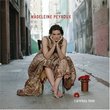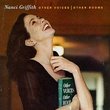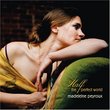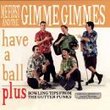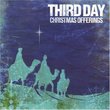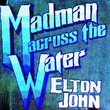| All Artists: Various Artists Title: I'm Beginning to See the Light Members Wishing: 1 Total Copies: 0 Label: Sony Music Distribution Original Release Date: 1/1/2007 Re-Release Date: 9/11/2007 Genres: Dance & Electronic, Jazz, Pop, Broadway & Vocalists Styles: Swing Jazz, Traditional Jazz & Ragtime, Dance Pop, Oldies, Traditional Vocal Pop Number of Discs: 1 SwapaCD Credits: 1 UPC: 886971453928 |
Search - Various Artists :: I'm Beginning to See the Light
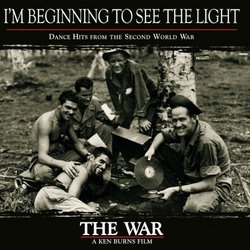 | Various Artists I'm Beginning to See the Light Genres: Dance & Electronic, Jazz, Pop, Broadway & Vocalists
To wartime America, music provided both entertainment and uplift. There may have been rationing and general shortages, but dance halls flourished as never before, fueled by the bands of the era. Despite constant depletion ... more » |
Larger Image |
CD DetailsSynopsis
Product Description To wartime America, music provided both entertainment and uplift. There may have been rationing and general shortages, but dance halls flourished as never before, fueled by the bands of the era. Despite constant depletion of their musicians by the draft, the bandleaders still found able replacements from the small towns and big cities of America. Never before or since has such musical talent existed. On this CD you ll hear the talent and the tunes distilled through the swing of the bands that kept Americans dancing and singing during the darkest days of World War II - tunes that buoyed the spirits of soldiers at home and overseas, and perfectly expressed the American spirit of affirmation in the face of adversity. Similarly Requested CDs
|
CD ReviewsTop Music From the World War II Era Doug - Haydn Fan | California | 09/12/2007 (5 out of 5 stars) "Although there are other CDs featuring music from this age, this CD and its companion, "Sentimental Journey" showcase many of the better musical numbers among the popular hits from World War II. Vocals by and large have been omitted. (Though oddly enough the two titles both have female vocalists, Doris Day for Les Brown in "Sentimental Journey" and Kitty Kallen for Harry James in "I'm Beginning to See the Light.") If you're expecting Bing Crosby or the Andrews Sisters you'll have to look elsewhere. (There is one Crosby selection on the music from the documentary.) For most modern listeners this is probably a plus - though I highly urge listeners to give Crosby a hearing, an extraordinary talent. Omitting the Andrews Sisters is a little bit like discussing the War in the Pacific and not mentioning the Marines! And the Andrews Sisters song "Rum and Coca-Cola" should dispell any preconceived notions about their songs consisting of only trite sentimental lyrics. Viewers of the documentary may be interested in following up with whole CDs by some of the featured artists, especially Duke Ellington, Artie Shaw, Count Basie and Benny Goodman, and, of course, Louis Armstrong. The female vocalists of the era, such as Jo Stafford or Helen Forrest, are largely absent here, but their songs are available on other CDs, and for an overall sense of the time one should give them a listen. Care was taken not to fill these two CDs with dated hits devoid of any significant and redeeming musical qualities. Practically all the musicians on these tracks played together at one time or another. The musical cross-pollination was remarkable, and was further fueled by coast-to-coast radio broadcasts which allowed fellow musicians and depression poor fans a chance to hear unfettered live cutting-edge music-making. (There were no Ipods with thousands of downloaded tunes - many Americans did not own a record player - record sales were insignificant by today's affluent standards: by the start of the forties the juke box became the king of the hill.) To demonstrate something of the nature of the musical back and forth of the times you need only look at Harry James' early career. He started off with Ben Pollack, who employed practically everyone at one time or another, including another famous trumpet player a decade or so earlier, Bix Beiderbecke. In 1936 James joined Benny Goodman's band at the very height of Goodman's popularity, then left two years later in 1938 to start his own band, where he helped the budding career of a young vocalist named Sinatra. Who in turn went over to the Tommy Dorsey band. And then left to go his own way. And the same sort of musical chairs could be said of everyone. Along with this intense artistic interaction which had been going on since the mid-twenties was the enormous impact of black musicians and jazz. Goodman's hiring of black musicians such as pianist Teddy Wilson, vibes genius Lionel Hampton, and the short-lived but highly influential guitarist Charlie Christian, along with the wonderful arranger Fletcher Henderson showcased this remarkable musical interplay of ideas to a then very segregated USA. The sight of musicians of color playing on the same stage with Goodman displayed openly what was happening within the music - an enormous adaption - some of it admittedly opportunistic - of black musical creativity by the most original musicians in mainstream America. Of course Goodman's lead in this field, years before the so-called color barrier was broken in baseball, remained exceptional. Negative fallout from Artie Shaw's attempt to integrate Billie Holiday into his band finally became too much for Ms Holiday who withdrew. As the Count Basie band brilliantly said, "It's the Same Old South". But among the musicans there was a remarkable mutual respect - you were judged on your ability to play, not your skin color. Millionaire band leader Charlie Barnet idolized the music of Ellington and Basie, and they respected his efforts to repliciate their musical universe. When Barnet's band lost all its instruments and music in a fire that burned down the landmark Palomar ballroom, the legendary site of a then 26 year-old Benny Goodman's breakthrough August 21, 1935 swing concert, Count Basie and Duke Ellington gave Barnet's group arrangements to tide them over. The title song "I'm Beginning to See the Light" was a Duke Ellington song. However, all good things must come to an end. By the end of 1944 the Swing Era and the big bands were overtaken in popularity by solo singers, led by Frank Sinatra. Union battles leading to recording bans hurt. The most popular bands, such as James and Dorsey and especially Glenn Miller, were now playing music that was softened down from the harsher and wilder rythmic excesses of a few years back. They were beginning to sound like the 'sweet bands' - the groups that emphasized simpler arrangements and melodies. It was not surprising when Bebop emerged as a reaction to this musical soft selling out, and the balancing act of art and commercialism which had hallmarked the best music of the big band era was swept away in the intense inner worlds explored by musicians like Charlie Parker and Dizzy Gillespie. By the close of the war the demand for large expensive groups died down; the high water mark of the late thirties and early forties subsided. This carefully chosen and intelligent selection should offer hours of pleasure to anyone curious about one of the wonder ages of American popular culture and its music. Not since the Strauss family and the Viennese waltz has there been a music more created for the dance than the great music of the Swing Era. In some ways it was the worst of times - but the music was definitely the Best of Times." Five Star Winner! Rachel's Mom | Michigan | 12/18/2007 (5 out of 5 stars) "When my MIL saw the series on PBS, she enjoyed the music so much that I searched for the track online. I purchased it for her as a surprise gift. If you want to get a gift for someone who lived through that era, this is the GREATEST! No dusting, no calories! She LOVES it! She played it continuously and was worried enough to ask, "Do these wear out?" Although I told her I doubt it, I assured her I would get another set if it should. She is back at the Big Band dances with her sweetheart, she is anxiously awaiting a letter from her love across the ocean, she is interrupting waiting on customers at the soda shop to listen yet again to Frank Sinatra. It was such a hit with her, that I ordered another set for my dear Aunt who also had a sweetheart in the Navy in WWII. My sister-in-law ordered a set for a friend's parent who has early Alzhiemer's. Music has the ability to transport them back to the sights, sounds and even smells of the events taking place in the 40's--a true Time Machine. They are young, beautiful and in love again. If you want to give a WINNER gift to one of your older relatives or friends, this is it! "Sentimental Journey" and "I'm Beginning to See the Light" bring several hours of smiles and occasional tears again and again as they evoke memories of those highly charged emotional days of World War II. P.S. We Beatles kids are enjoying the pure sounds, beat and lyrics of the 40's, too!" Music from Ken Burns' "War" Gary | 10/28/2007 (5 out of 5 stars) "This CD and its companion "Sentimental Journey" comprise a memorable collection of popular music from the WWII years. Good buy!"
|

 Track Listings (19) - Disc #1
Track Listings (19) - Disc #1